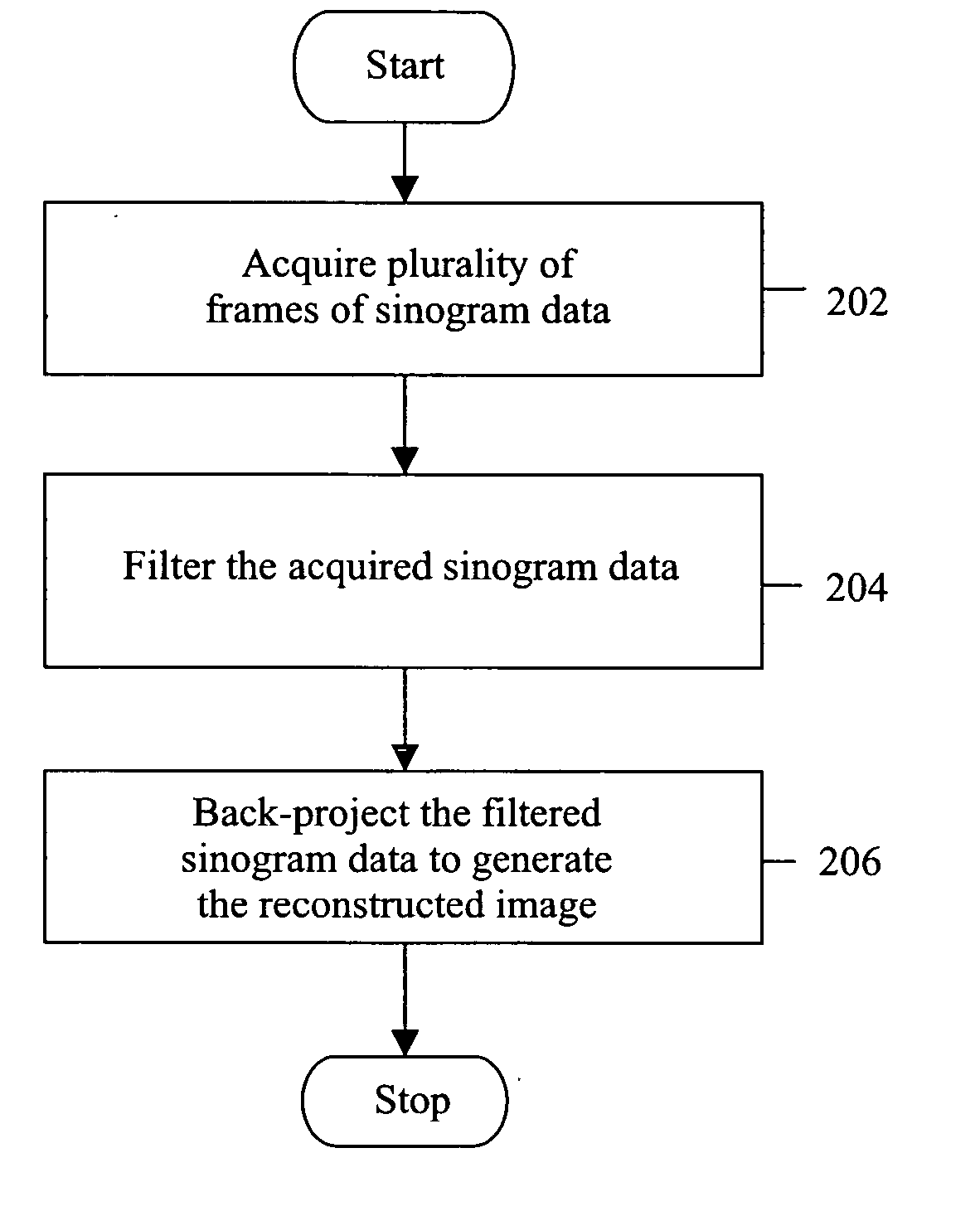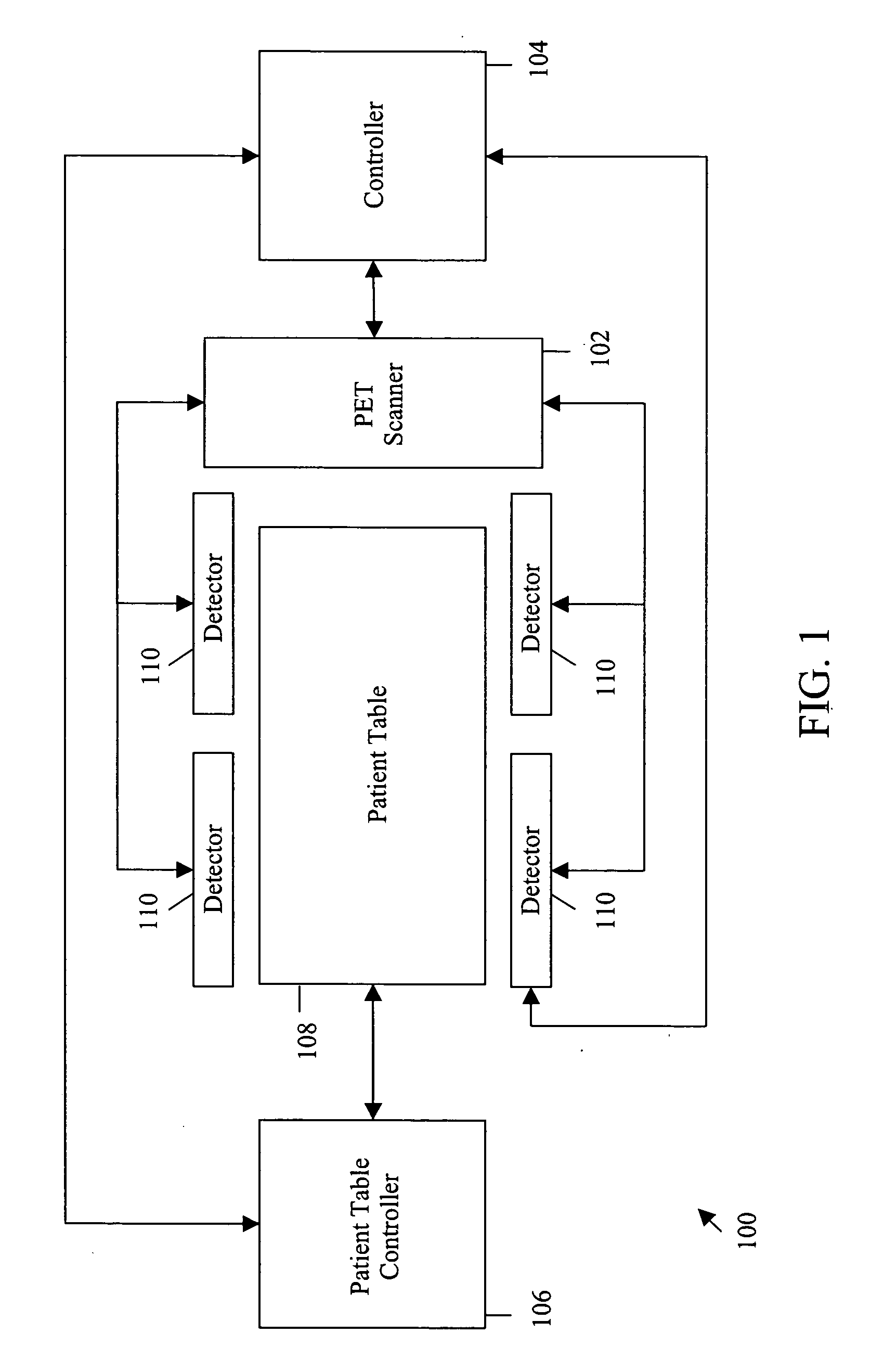Method and system for imaging using a filter for time-of-flight pet
a technology of time-of-flight pet and filter, applied in the field of positron emission tomography (pet) systems, can solve the problems of blurred and distorted images obtained through bp operation, uncertainty in the measurement of tof, and inexact measurement of to
- Summary
- Abstract
- Description
- Claims
- Application Information
AI Technical Summary
Problems solved by technology
Method used
Image
Examples
Embodiment Construction
[0018] Various embodiments of the invention provide methods and systems to enable a Confidence-Weighted Back-Projection (CW BP) with filtering for Time-Of-Flight Positron Emission Tomography (TOF PET). The embodiments utilize an analytical filter to improve the quality of image by preventing blurring and distortion of the final output images.
[0019]FIG. 1 is a block diagram of a PET system, in accordance with an exemplary embodiment of the invention. PET system 100 includes a PET scanner 102 and a controller 104. In accordance to various embodiments of the invention, PET system 100 further includes a patient table controller 106, a patient table 108 and PET detectors 110. Patient table 108 supports a patient, who is to be scanned, to acquire an image of the relevant portion of the body of the patient. Patient table 108 holds the patient within a viewable area of a plurality of detectors 110. Patient table 108 can be moved along a viewable area axis that is defined by detectors 110. ...
PUM
 Login to View More
Login to View More Abstract
Description
Claims
Application Information
 Login to View More
Login to View More - R&D
- Intellectual Property
- Life Sciences
- Materials
- Tech Scout
- Unparalleled Data Quality
- Higher Quality Content
- 60% Fewer Hallucinations
Browse by: Latest US Patents, China's latest patents, Technical Efficacy Thesaurus, Application Domain, Technology Topic, Popular Technical Reports.
© 2025 PatSnap. All rights reserved.Legal|Privacy policy|Modern Slavery Act Transparency Statement|Sitemap|About US| Contact US: help@patsnap.com



